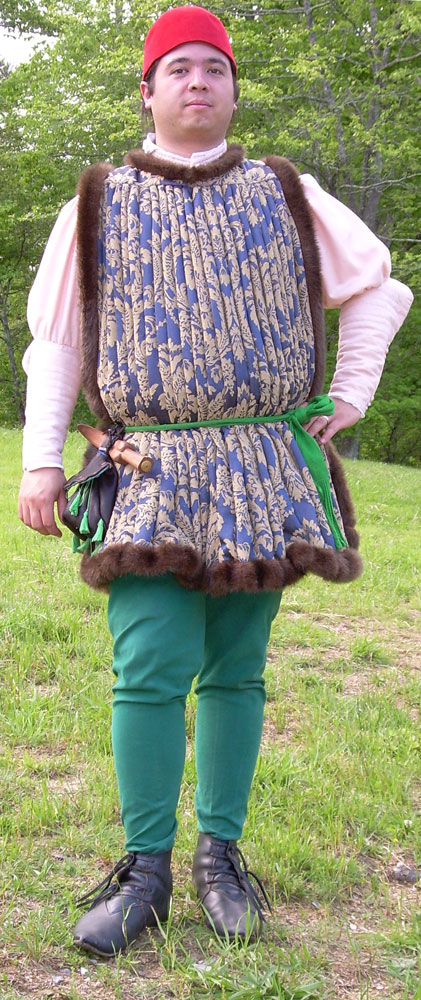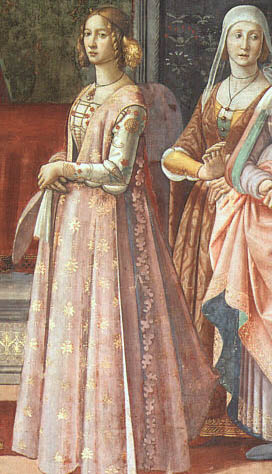Giornea/Cioppa
Men's
In the 15th century Italian style the doublet and hose are similar to contemporary styles in the rest of Europe. One of the distinctively Italian garments of the time is the giornea, a sideless tabard-like garment usually shown with rows of carefully arranged pleats. There is some pictorial evidence of the pleats being held in place by tacking them to tapes at intervals down the length of the pleats.

Women's
Wealthy women in Renaissance Florence generally wore three layers of clothing when out in public or receiving formal visitors (though not while at home in an informal setting). During the latter part of the Quattrocento, the outer most garment was usually a cioppa or a giornea, which was a tabard like overdress with an open front and sides. It is thought that the giornea developed from a military garment, while the cioppa was closed up the front and sides and resembled the houppelande of northern Europe. The cioppa was more of a winter garment, often lined with fur, while the giornea was lighter in weight and in style.
The cut of the giornea was very simple, draping over the shoulders and hanging to the ground. It did not fit closely to the body, though sometimes a belt was worn around the waist and over the front panels of the dress. A clasp was another form of closure for this dress. The hem fell just at the top of the foot in front, sometimes longer in the back, forming a small train. Some early giornee were relatively plain, but later they became more opulent through use of rich fabrics and detailed embroidery. There are a number of examples of giornee in contemporary art, including sculpture.

